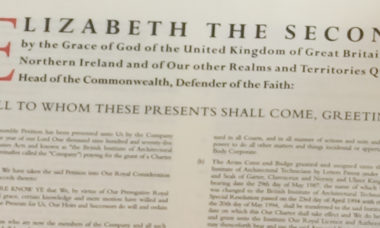Architectural Technology
An essential design function with its main influence on process, performance and buildability.
Then, now and into the future, the discipline is as relevant as ever.
1958 | RIBA conference on architectural education held in Oxford.
1962 | The Architect and his Office survey published.
This demonstrated the need for Architectural Technicians and an Institute for technicians to be sponsored by the RIBA to ensure the maintenance of standards, education and training.
1964 | RIBA Council unanimously support the formation of an association of Architectural Technicians.
1965 | Society of Architectural and Associated Technicians (SAAT) is founded on 12 February.
A Society to represent all technicians within construction and demonstrate multi-disciplinary training and understanding. In its first year, 1,799 technicians joined the Society.
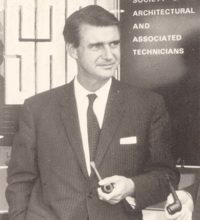
1967 | SAAT Journal is launched, issued four times a year.
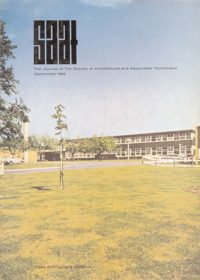
1968 | The Training of Technicians in Architects' Offices leaflet published.
1969 | Practice Qualification Log Book route of entry for membership introduced.
1970 | First professional interview Assessment Boards for membership held.
This leads to an increase in membership as SAAT successfully embedded itself as a lead body within the construction industry.
1975 | SAAT is incorporated as a Company Limited by Guarantee.

Some of the key figures in SAAT's development
1977 | First Honorary member is elected; Thomas Lilley RIBA FCIOB.

Chairman Edgar Jones presents the first Honorary membership to Thomas Lilley
1979 | First recognition of an overseas course – Higher Certificate of Construction (Architecture), Hong Kong Polytechnic.
1983 | Graham Watts becomes the first Chief Executive.
1984 | The Register of Practices is established for Full Members running a practice. Hong Kong Centre is founded – the first International Centre.

1985 | Continuing Professional Development scheme is launched.
1986 | SAAT celebrates its 21st Anniversary. In May, it becomes British Institute of Architectural Technicians (BIAT).
The name change recognised the development of the Society and its place within the built environment sector as the body for specialists in Architectural Technology.

1987 | Amalgamation with Institute of Architectural and Associated Technicians and Republic of Ireland Centre formed – the second International Centre.
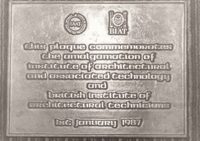
1990 | BIAT presented with the formal letters of patent from the Institute Coat of Arms, from which the Institute's logo is taken. BIAT celebrates the 25th Anniversary of the Insititue.
1993 | University of Huddersfield is the first to offer the Honours degree in Architectural Technology. Those first to receive the Institute's Accreditation are Luton University, South Bank University and University of Ulster.
1994 | BIAT becomes British Institute of Architectural Technologists, to recognise the development educationally and in practice of the professionally qualified Architectural Technologist.

1995 | Architectural Technology: the journal of the British Institute of Architectural Technologists is launched.
The new magazine was designed to raise the Institute's profile within the construction industry.
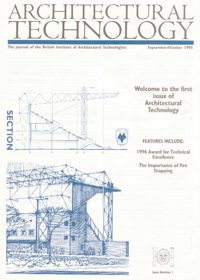
The first cover of the new journal
2000 | The Institute holds its first International Conference at Dublin Castle entitled Technological Innovation in Design and Construction.
2002 | The Institute introduces a new technician grade to recognise the professionally qualified Architectural Technician.
2005 | In its fortieth year, BIAT is granted a Royal Charter and becomes Chartered Institute of Architectural Technologists (CIAT).
The protected descriptor Chartered Architectural Technologist for its Full Members is introduced cementing Chartered Members as one of the lead professions at the forefront of the built environment.

2006 | Approved as the UK Competent Authority for Chartered Architectural Technologists within the EU.
The Chartered Architectural Technologist is a regulated profession within the UK under EU Directive 2005/36/EC.
2007 | CIAT-Accredited Conservationist Scheme introduced for Chartered Members who wish to lead on grant funded heritage projects. The Institute also becomes a licensed body of the Society for the Environment and can award the Chartered Environmentalist qualification title.
2008 | Chartered Architectural Technologist listed in the Standard Occupational Classification alongside the architect, surveyor and town planner. First AGM held outside of Europe in Hong Kong.
2011 | First Masters degree in Architectural Technology awarded at Sheffield Hallam University.
2013 | Professional Assessment route for membership is launched.
2014 | Five new Centres are formed internationally; Australasia, The Americas, Asia, Europe and Middle East and Africa.
2015 | CIAT celebrated its 50th Anniversary as it continued to build on its solid and respected platform for the continued evolution of the discipline of Architectural Technology.


